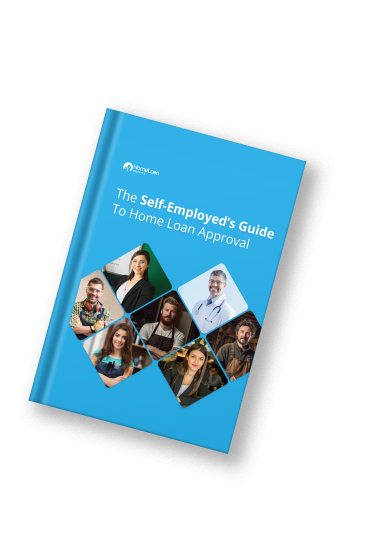If you’ve got a job and can afford a home loan, why won’t the banks help you?
With overtime, probation, contractors and agency workers with multiple part time jobs, it isn’t hard to see that most people don’t fit the banks normal rules.
Luckily, modern home loan lenders are beginning to understand that these days not everyone has a 9-5 job and not everyone can prove their income as easily as they’d like to. You can still get a home loan!
How can I get approval?
The secret to getting a lender to accept your income as true and correct is to apply with a lender that views your situation in a favourable light.
Providing the best possible combination of documents will also help to ensure that they assess you as earning a strong income.
For example, if your payslips show a low income because you’ve done no overtime in the last few weeks, provide your group certificate and a letter from your employer instead!
We’re experts in getting loans approved for people with unusual employment!
With our expertise, we can help you compare the loans offered by those lenders and get back to you with two or three loans with the most competitive interest rates and fees!
Call us on 1300 889 743 or complete our free assessment form today!
What types of employment can we help with?
- On probation: Learn which lenders and loans are available to you when you have just started a new job.
- Contract workers: Find out the reasons why lenders don’t like contract employees and how to find a lender that offer contractor mortgages.
- Self employed: Not all lenders read tax returns in the same way. Did you know some can use BAS statements or even just let you tell them what your income is?
- Casual employees: Just because you are technically casual it doesn’t mean that your income isn’t secure! You can get a home loan if your job is secure.
- Overtime reliance: As much as a third or even half of the income of nurses, police officers and shift workers comes from overtime or other bonuses. Loans are available from lenders that will take your full income into consideration.
- Temp / Agency workers: These days, agencies employ a significant part of the workforce. Most banks haven’t caught up with the times and still decline anyone employed through an agency. Of course not all lenders are the same!
- Bonus income: We know which lenders will include your bonus income as part of your annual income.
- Doctor home loans: If you’re in the medical industry, you may be eligible for great discounts and a waived Lenders Mortgage Insurance (LMI).
- Discounts for professionals: Other professionals and high net worth individuals like dentists, vets, accountants and lawyers may also qualify for heavily reduced interest rates. You can save thousands with some lenders!
- Rental income: Are you an investor who earns income through your rental property? Make it count towards a mortgage!
- Commission income: Those working in sales roles may be paid on a commission basis. Find out which lenders will accept commission income.
- Maternity Leave: Under a maternity leave home loan package, banks accept your return-to-work salary for assessing your income. Most banks allow up to 1 year of leave period but we also have a lender in our panel who accepts 2 years of leave period.
We can also help in a variety of other situations and with a variety of other income types.
Please give us a call on 1300 889 743 or complete our free assessment form for more information.
Do you earn unusual income?
Non-traditional or irregular income goes hand-in-hand with unusual employment depending on the industry that you work in.
This is particularly true of government jobs or sales professionals where you may receive bonus income or incentives.
We know banks that will consider the following types of bonuses or incentives when assessing your income.
The more the bank considers, the greater your borrowing power:
- Annuity income
- Bonus income
- Commission income
- Company car
- Salary sacrifice or packaged salary
- Stipend income
Why do banks care about my employment?
People commonly ask us why their employment situation matters.
If the banks have the house as security, surely this is enough to protect against any loss they incur.
What most people don’t know is that selling property is a last resort.
Most banks don’t want to ruin their reputation by engaging in irresponsible lending practices and lending to those who can’t fulfil their financial obligations.
Banks care about their brand (more than they do about you!) and as such, they need certainty that the loan will be repaid, and this is evidenced through the documentation you provide them with, in terms of your income and employment.
What do I need to provide?
Australian lenders need to have documents evidencing the income that you have put on the application form.
They meet this requirement by asking for:
- Payslips
- Group certificates
- A Letter from your employer or
- Bank statements
If you feel that you may not have sufficient documentation to apply for a loan, please call us on 1300 889 743 or complete our free assessment form today. Our mortgage brokers will assist you in getting approval.
How do banks assess your employment?
When you submit a home loan application, the bank will give your loan a credit score based on the overall risk that you pose.
Your employment and income stability forms a major part of this score.
Here’s what they take into account:
- The length of time in your current job.
- The length of time in your industry (study is included).
- The tendency of people in your industry to default on loans (e.g. doctors are a low risk while builders are a high risk).
- Your employment status (full time, part time, casual, contract etc).
- The stability of your income (casual, overtime, bonuses, commission etc).
- Your reliance on any unstable income.
In addition to the above list, there are some other more complex factors that are specific to each lender.
Job Stability: Key Factor for Loan Approval
If you’re a high earner whose employment situation is subject to change, you’re probably aware that the banks may be hesitant to lend to you.
This is because banks need to be able to determine where your income is coming from.
If your employment is full-time, banks know that your income source is secure so they are more likely to lend to you.
If you have casual employment, however, there’s a strategy for winning over the banks. The secret lies in demonstrating that you have a steady flow of income from your job. Most lenders will look at:
- How long you’ve been in a particular industry
- The tendency of people in the industry to default on loans
- The stability of your income
- How reliant you are on unstable income (commission, bonus, etc).
If you are in a strong financial position and have been in your job for 6 -12 months, you can borrow up to 95% of the property value. It can go even higher if you choose to go with a guarantor.
A good credit score and relevant industry experience can open doors to loan approval, even with a short employment history or casual job status.
We know which banks will approve you based on your current employment situation.
How do banks calculate your income
One of the major problems faced by people who have an unusual employment situation is how the banks work out their income when it fluctuates on a weekly basis.
As a general rule, banks will use the most conservative method of assessing your income.
For example, if you provided two recent payslips and your group certificate and they show two different incomes then they will use the lower of the two.
Unfortunately, this means they often don’t use your actual income!
In particular, people who receive overtime income, work on a casual basis or who have received a pay rise in the last year tend to be assessed at a lower income than they are actually earning.
8 Tips To Follow As A Self-Employed Borrower
Tips & Tricks From Our Experts To Increase Your Chances Of Approval

Our mortgage brokers are experts in the banks’ employment policies and in the methods they use to assess your income.
We can select the lender that is best suited to you and then present the right documents to that lender to get approval.
Best of all we usually deal with the major lenders and so you don’t have to pay a higher interest rate!
Speak to us today on 1300 889 743 or complete our free assessment form and let us help you apply for a home loan!
How can we help?
Our mortgage brokers are experts in the banks’ employment policies and in the methods they use to assess your income.
We can select the lender that is best suited to you and then present the right documents to that lender to get approval.
Best of all we usually deal with the major lenders and so you don’t have to pay a higher interest rate!
Speak to us today on 1300 889 743 or complete our free assessment form and let us help you apply for a home loan!
